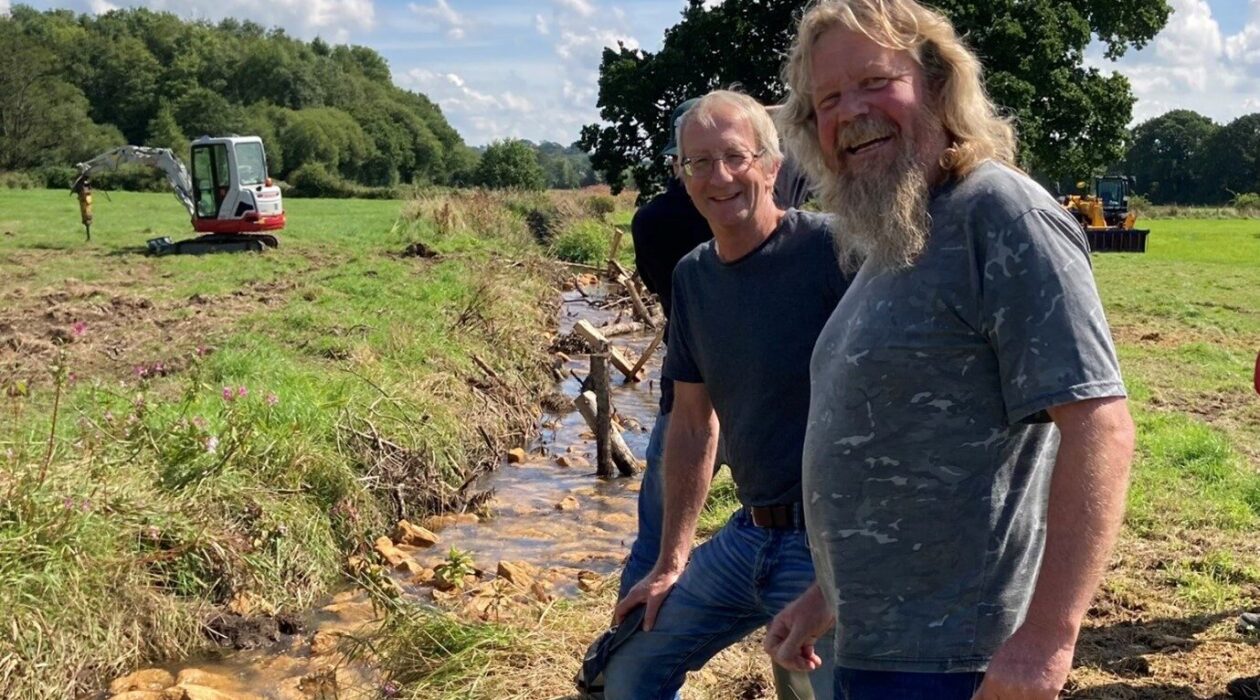Restoring the River Axe at Mosterton
Case study showing how one farmer in west Dorset has restored an incised river to reconnect with its floodplain.

Case study showing how one farmer in west Dorset has restored an incised river to reconnect with its floodplain.

The river channel in the project area had become badly degraded and suffered from decades of river and land management, resulting in increased water velocity, destabilisation of the river bed and a deeply incised channel (river flowing 2m below the floodplain). Dorset farmer Chris Banyard had successfully restored one stretch of the river Axe on his land with Environment Agency support but knew that there was more that could be done to connect the river back to the floodplain in a further stretch upstream. As part of a wider plan to increase biodiversity, capture carbon and slow down flows at the site, Chris had already secured English Woodland Creation Offer funding to plant trees at the site but was looking for support to restore 150m more of the river. Working with George Greenshields of Ecologic Consultants, Catchment Sensitive Farming, the Environment Agency and Dorset Council Flood Risk Management Team, a design was agreed, and consents obtained, so Chris made an application to FiPL for funds to deliver the practical works.
The objective of this project was to restore a stretch of the river to improve connectivity of the river with its floodplain, alleviate downstream flooding risk, reduce sediment run off, capture carbon within the woody material held within the channel, and improve habitat for wildlife including dragonflies and water voles. This would deliver against Climate and Nature themes.

This FiPL funded section of river was restored using 480 cubic metres of woody brash and larger diameter wood from local hedge-laying and hedge cutting activities which was compressed into the channel using a slew. This was secured with stakes made from some of the wood, and additional chestnut. The woody layer was topped with 200 tonnes of local building stone, to create a substrate for silt and gravel deposition. All materials came from within five metres of the project site. A technical report is available from the FiPL team on request if more details are required.
150m of river was restored, complementing the adjacent 100m restored the year before. Almost immediately, damselflies were observed egg-laying and water voles moved in. Heavy rainfall over the winter of 23/24 has shown how the river now functions more naturally in high water scenarios.
Chris has also shared his knowledge and experience via hosting a series of site visits, including for other farmers from the Axe Landscape Recovery project, Environment Agency, and DEFRA staff.
Timings for this type of project are crucial. There is a small window of opportunity for delivery when fisheries and bird nesting needs are taken into consideration. Making sure all permissions, and
This farmer led approach and generous use of the site for demonstration purposes has been extremely successful in influencing others in the catchment to investigate what changes could be made on their own land.